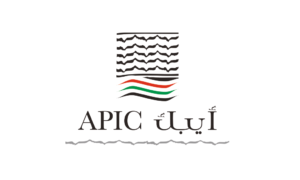Migrating Banking Data: how to ensure a smooth process
The latest trends in banking and fintech suggest data migration may be either an elective tool for business growth, or a necessity to modernize legacy systems.The task of migrating from in-house to cloud-based systems will grow exponentially in the coming years, as system failures and unresponsive programs will not be tolerated by clients. Users are too accustomed to smooth-working systems to tolerate a business with a bulky, faulty process. For that reason, going through a smooth migration will be a common challenge for all businesses undergoing digital transformation.
Reasons for data migration vary, and include both the growth of data, and the inclusion of new business processes and solutions. Data migration may also be a part of the overall process of digital transformation, where businesses boost both storefront and back-end digital solutions. Banks are especially open to various types of data migration, ranging from storage to back-end solutions for new products and 24/7 service.
Four Key Resources for System Migration
Undergoing data migration hinges on four key elements: a reliable platform, an experienced migration team, data strategy, and testing and follow-up.
Despite the simplicity, a system migration can quickly become a highly involved process with multiple sub-steps. Finding the right options is essential to achieve a hassle-free migration with optimal expenses. The last and indispensable step is to track the data post-migration, ensuring quality and adding missing pieces. Challenges at this point include a detailed look at security and access settings, to avoid exploits and attacks in the future.
An internal migration is suitable for some businesses, where in-house staff can control each process. But sometimes, the task is too complex, requiring advanced knowledge and experts beyond the in-house IT team. As system migration becomes more common, reliable partners will be key to bridging the gap to a successful and complete migration without data loss or corruption.
Fininbox, a firm experienced in bank-specific migrations, has already supported banks and other financial institutions in transforming their legacy systems. Fininbox has managed multiple similar complex transformations. Anton Zujev, Head of Business Development at Fininbox, says:
“System migrations take time and resources to perform correctly and, most importantly, seamlessly. However, Fininbox has extensive experience in migrating from very different systems and in a short period of time. Our team has performed many transformation and data migration projects with varying degrees of complexity.”
Having the right migration team is therefore essential to ensuring there are experts posted at each key step of the project. An in-house IT team may be experienced in their own system for daily operations, but insufficient in migrating all sensitive data as this task may be new and unfamiliar. A dedicated team of specialists will see migration through multiple complex steps, while working with the in-house team on specific data points and business processes.
Banks and financial institutions pose a specific challenge, due to their regulated business, large amounts of data, and accounting processes. There is very little room for error and there is an increased reputational risk. For that reason Fininbox leveraged its experience with data migration, to simplify the choices of tools and platforms.
Potential Problems in Data Migration
System migrations involve the sub-issue of data migration, including data collection tools and old databases. Data is one of the most valuable resources for the business, and various forms of data are constantly evolving and accruing in storage. For that reason, there are multiple technical hurdles in any type of migration or digital transformation. Issues of formatting and loss are always relevant, whether moving from a legacy system, or switching cloud service providers. Potential pitfalls in data allocation involve issues of harnessing sufficient resources for the task, including both technological and human resources.
The approach to data migration requires an anticipatory mindset, to set up a checklist of sub-tasks before moving the data. For very complex businesses with large-scale systems, building such a checklist or anticipating all potential pitfalls may be outside its scope. Tools to migrate the data also offer various profiles in terms of pricing and complexity. Tools range from on-site to open-source and some native cloud-based solutions which take care of both data storage and migration.
System migration has three main branches, one of which is moving business processes in part or in whole to cloud-based services, instead of in-house servers. The other branch of migrations involves apps, and running those apps on new platforms. Finally, database migration is a task in itself, as the accrued stores of data must find a new and safe storage.
“By working with a dedicated and experienced team, a bank can avoid pitfalls such as choosing the wrong tool, data loss, or exposing files to unauthorized access. Fininbox has completed multiple similar tasks with success, and owns a roadmap to migration that can be tailored to the requirements of each client,” said Zujev.
Any business, and especially banks, can benefit from detailed analysis and from choosing the right tools and platforms. Strategies tailored to the business may range from a one-off migration of all data, to parallel running of legacy and novel systems. Guiding the strategy for data can achieve significant resource savings, while avoiding data loss and system downtime.



























